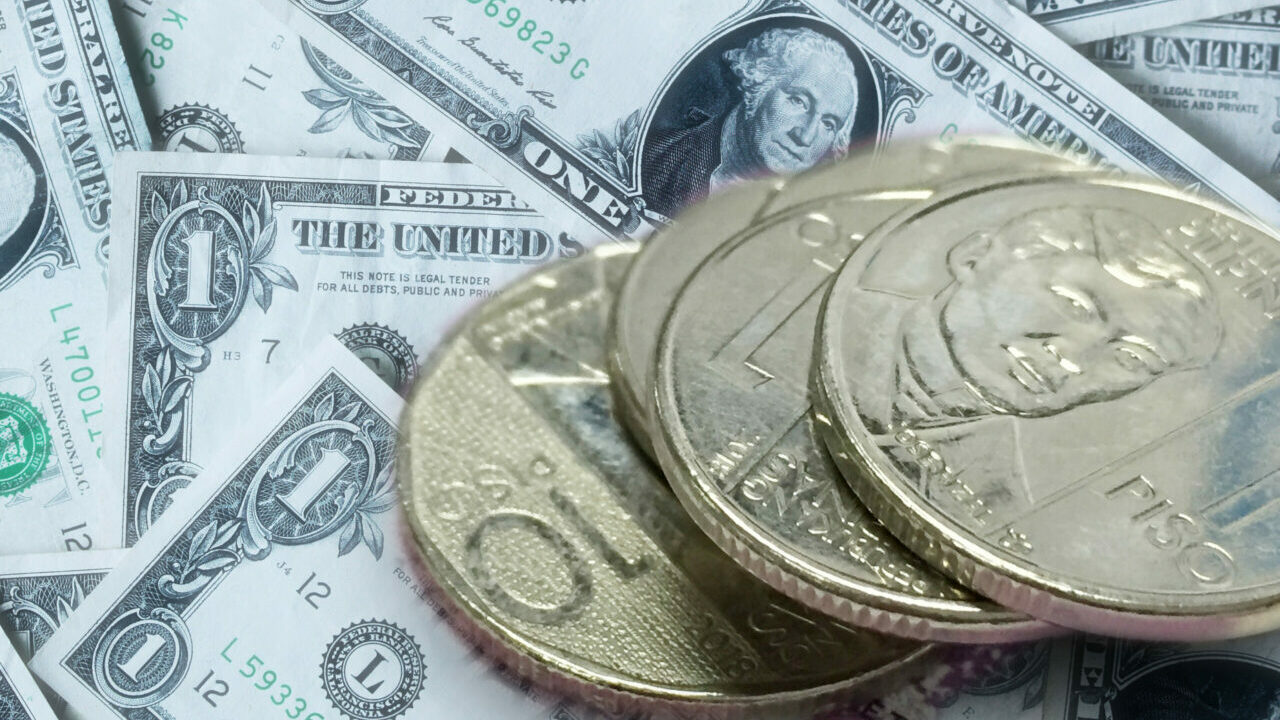Peso touches P59 vs dollar for 1st time

THE PHILIPPINE PESO breached the P59-to-dollar level for the first time in intraday trading on Wednesday, before closing just below the record low.
The local unit closed at P58.98 against the greenback on Wednesday, strengthening by one centavo from its lowest-ever finish of P58.99 on Tuesday, Bankers Association of the Philippines data showed.
The peso has weakened by 15.64% or P7.98 from its P51-per-dollar close on Dec. 31, 2021.
The local currency opened Wednesday’s session at P58.95 versus the dollar.
The peso’s weakest showing was at P59.02, another record intraday low.
Its intraday best was at P58.88 against the greenback.
The peso corrected following a statement from Malacañang that the president is closely monitoring the peso-dollar exchange rate, Rizal Commercial Banking Corp. Chief Economist Michael L. Ricafort said in a Viber message.
Press Secretary Trixie Cruz-Angeles said on Tuesday President Ferdinand R. Marcos, Jr. is coordinating with the economic team to assess the peso’s impact on inflation.
Dollars exchanged went up to $1.19 billion on Wednesday from $1.06 billion on Tuesday as Bangko Sentral ng Pilipinas (BSP) Governor Felipe M. Medalla said the Philippine central bank will likely be more active in the foreign exchange market.
ING Bank N.V. Manila Senior Economist Nicholas Antonio T. Mapa said in a Viber message that central banks in emerging markets can do “very little” against the broad dollar strength.
“Early rate hikes, jumbo rate hikes have all been cannon fodder as (Federal Reserve Chair Jerome H.) Powell and company tighten policy to combat US inflation induced by ongoing Russian invasion of Ukraine,” Mr. Mapa said.
“BSP governor has ruled out emergency rate hikes (can only surprise them once) and peso, although underperforming, has not been the exception,” Mr. Mapa said.
Last week the BSP raised its benchmark policy rate by 50 bps to 4.25%. Rates on the overnight deposit and lending facilities also rose by 50 bps to 3.75% and 4.75%.
The Monetary Board has raised rates by 225 bps so far since May, including a 75-bp off-cycle hike in July.
“With dollar strength looking like that, BSP will likely draw down reserves built up over the last two years,” Mr. Mapa said.
The gross international reserves (GIR) stood at $98.98 billion as of end-August, slipping by 0.85% from the $99.83 billion as of end-July, latest central bank data showed.
The foreign exchange buffer as of end-August was 8.3% lower from the $107.96-billion level a year ago, and marked the sixth consecutive month of decline. It was also the lowest since the $98.95 billion in gross reserves seen in August 2020.
“From 2019-2020 BSP grew reserves by $23.8 billion. This year they’ve drawn down a relatively modest $5.5 billion for context,” Mr. Mapa said.
The BSP expects to end the year with $99 billion in dollar reserves and $100 billion in 2023.
“I think (the BSP) will only be able to manage volatility of the currency,” a trader said in a Viber message.
For Thursday, Mr. Ricafort expects the local unit to move between P58.85 and P59.05 per dollar, while the trader gave a wider forecast range of P58.50 to P59.30. — Keisha B. Ta-asan



